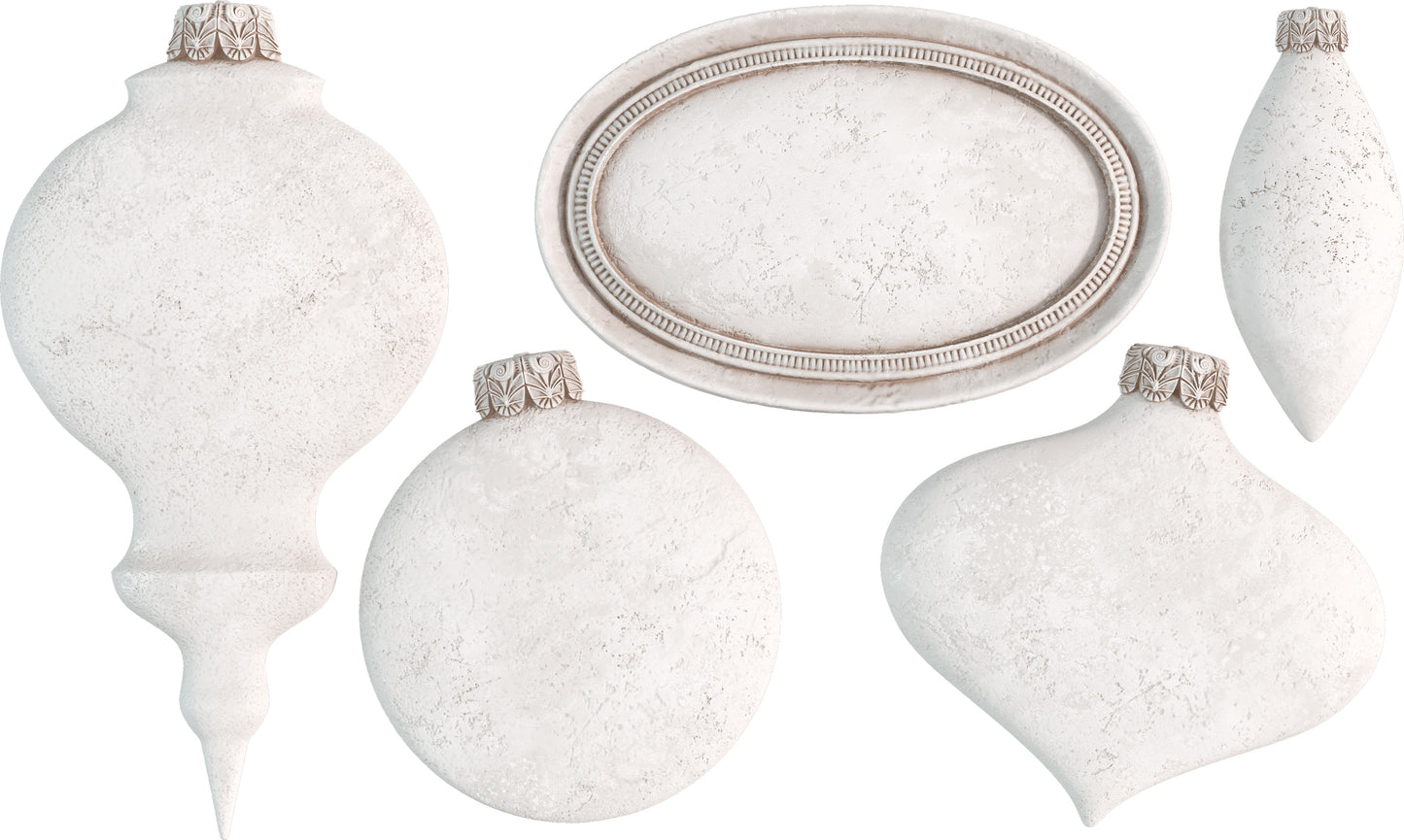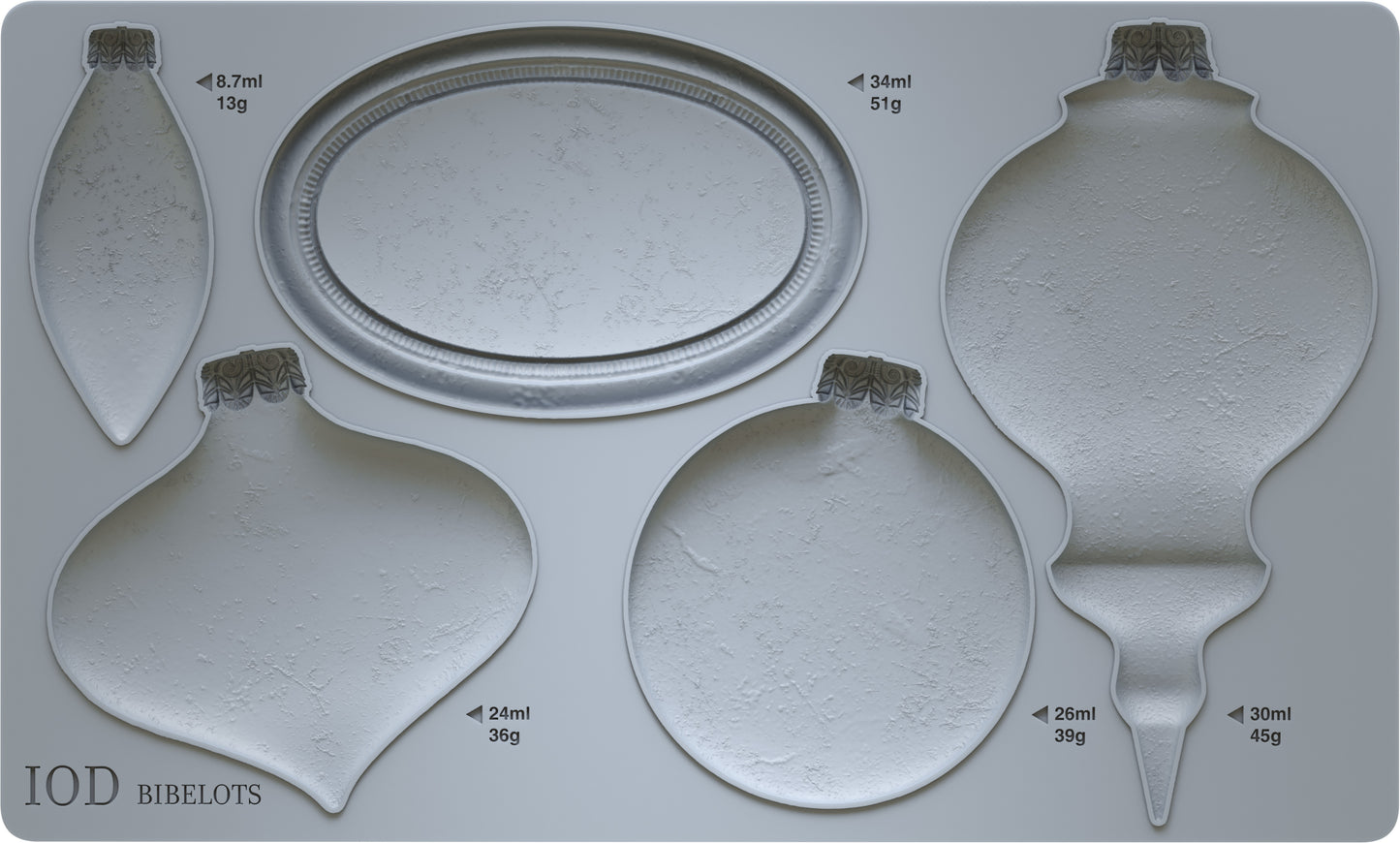KenzieJordyn
Bibelots, Ornament Blanks IOD décor mould 6 x 10 - by Iron Orchid Designs
Bibelots, Ornament Blanks IOD décor mould 6 x 10 - by Iron Orchid Designs
Couldn't load pickup availability
IOD Bibelots, Ornament Blanks 6 x 10 Decor Mould
Meet Bibelots, an intentionally bare mould designed to be the base for layering up holiday creations like ornaments and labels. This mould will be your go-to while crafting darling, personalized gifts that your friends and family will cherish for years. Each casting differs from the next, offering detailed shapes that emulate a classical, vintage Christmas aesthetic.
All of the designs in this mould are symmetrical, making it perfect for a variety of layouts, such as back-to-back ornaments, but works equally well on flat surfaces, such as door hangers and signage.
Project Suggestions:
Add bibelots to your baked goods moulds for holiday sugar cookies.
Cast your mould with clear resin and sandwich beautiful imagery between two sides of the ornament to hang on the tree! You can use all of the cavities at once and batch them for a tree full!
Adorn the oval mould with small elements from our holiday transfers.
Drill a tiny hole to hang little crystals or beads from the bottom of these.
DIFFERENT MEDIUMS
IOD Décor Moulds can be used with many different mediums. We will cover the two most common here. Every medium has its own characteristics, challenges, and virtues.
Air dry clay, or paper clay: IOD paper clay is an air dry medium, and one of our favorites. Like most paper pulp based air dry clays, some shrinking, warping, and cracking is inherent. We like these qualities for a distressed, authentically vintage look. Our favorite way to apply moulded pieces is to remove them from the mould while still moist, and adhere to the surface with the appropriate glue so it conforms well. For vertical surfaces, use a piece of low tack tape to hold it in place so it doesn’t slide.
Casting resins: There are some great pourable resins available. These have completely different qualities than the paper clay. There is no shrinking or warping, and the castings are more consistent. Depending on the project, these qualities can be helpful. If you need to conform them to a curved surface, this can be done if removed from the mould before it’s completely hardened.
On releases: We find that most of the time a release is not necessary and the casting will come out without the use of a release, however, if you are having trouble with the material sticking (more common with clays than resins), a light dusting of simple cornstarch or arrowroot is a great choice.
Share



